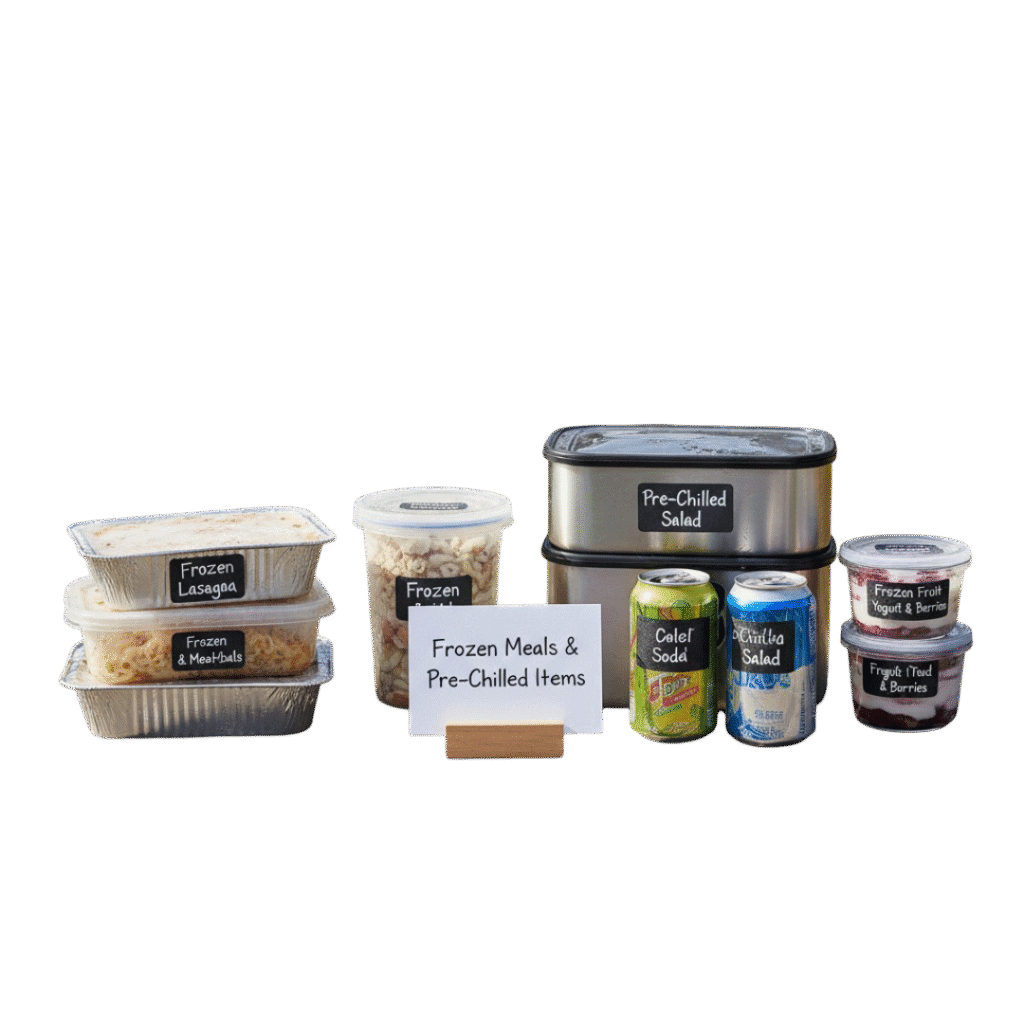Whether you’re packing a lunch, heading out for a picnic, or planning a camping trip, keeping your food and drinks cold without traditional ice packs can be tricky. Fortunately, there are several effective and creative alternatives to ice packs that keep things chilled for hours — without the mess of melting ice.
In this guide, we’ll explore the 10 best ice pack substitutes for every situation — from DIY hacks to eco-friendly options that work just as well (or even better).
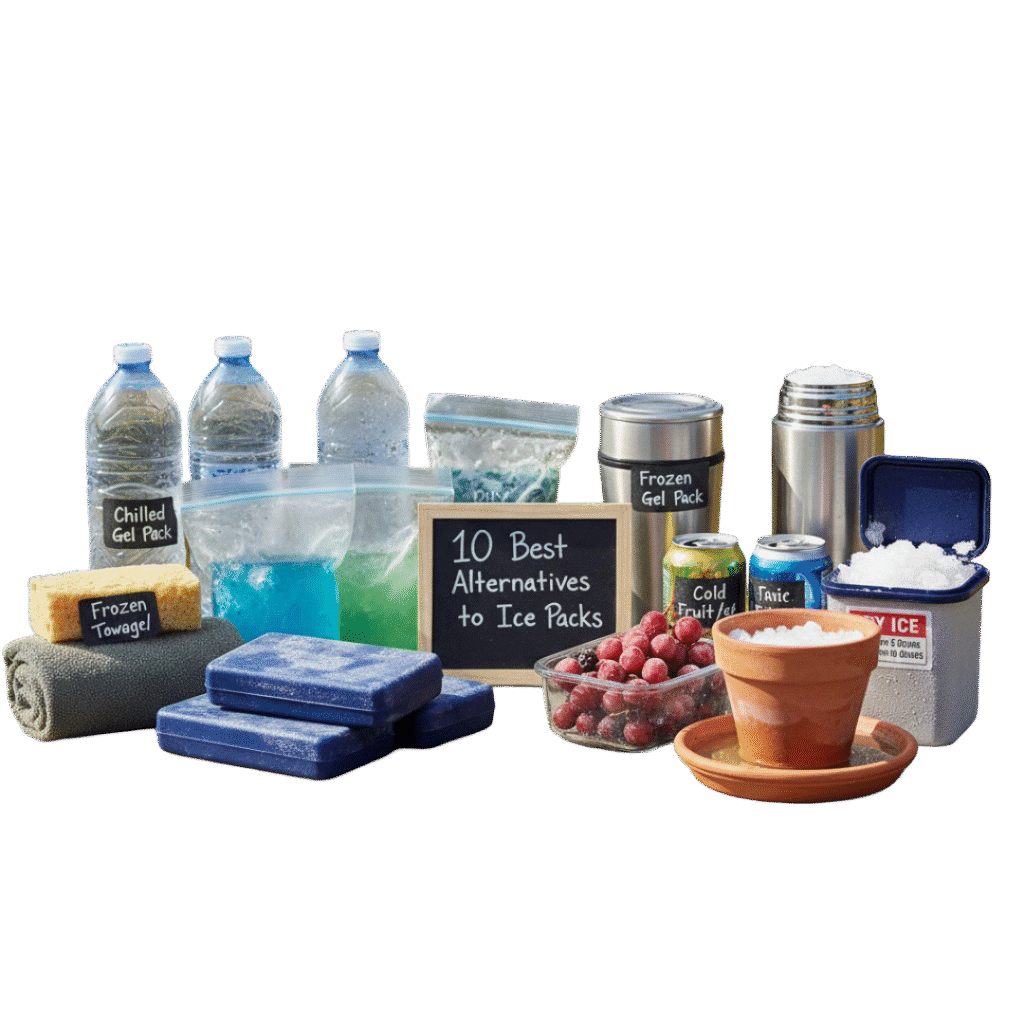
🧊 1. Frozen Water Bottles
Best For: Camping trips, coolers, lunch boxes
Frozen water bottles are one of the simplest and most reliable ice pack alternatives. Just fill a few bottles with water, freeze them overnight, and place them in your cooler.
When they melt, you’ll have cold drinking water ready to go — no waste, no leaks.
✅ Pros:
- Reusable and eco-friendly
- Keeps food cold for a long time
- Provides drinking water when melted
❌ Cons:
- Takes up more space than flat ice packs
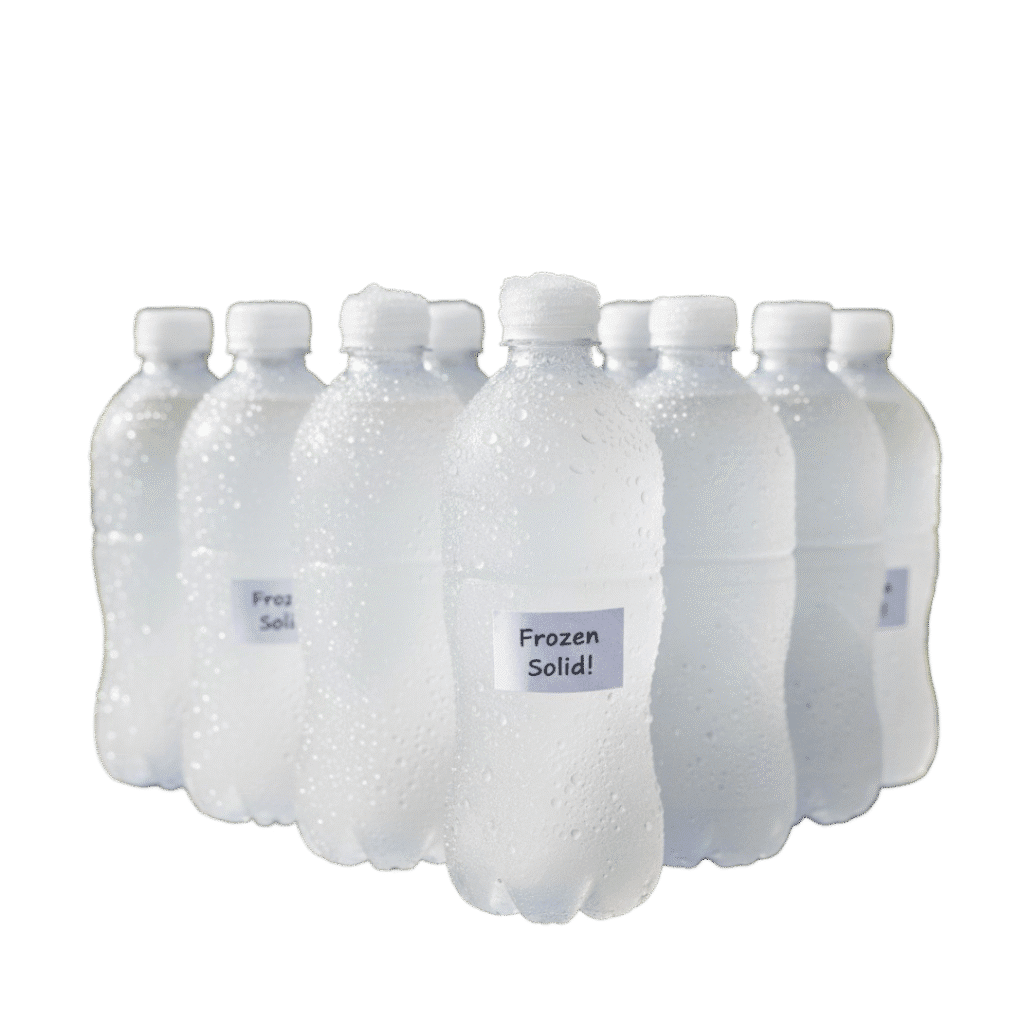
❄️ 2. Frozen Juice Boxes or Milk Cartons
Best For: School lunches or road trips
Freeze small juice boxes or milk cartons overnight and use them as dual-purpose coolers. They keep your food fresh and double as a refreshing drink once thawed.
✅ Pros:
- Great for kids’ lunches
- Saves cooler space
- No extra ice pack needed
❌ Cons:
- May burst if overfilled before freezing
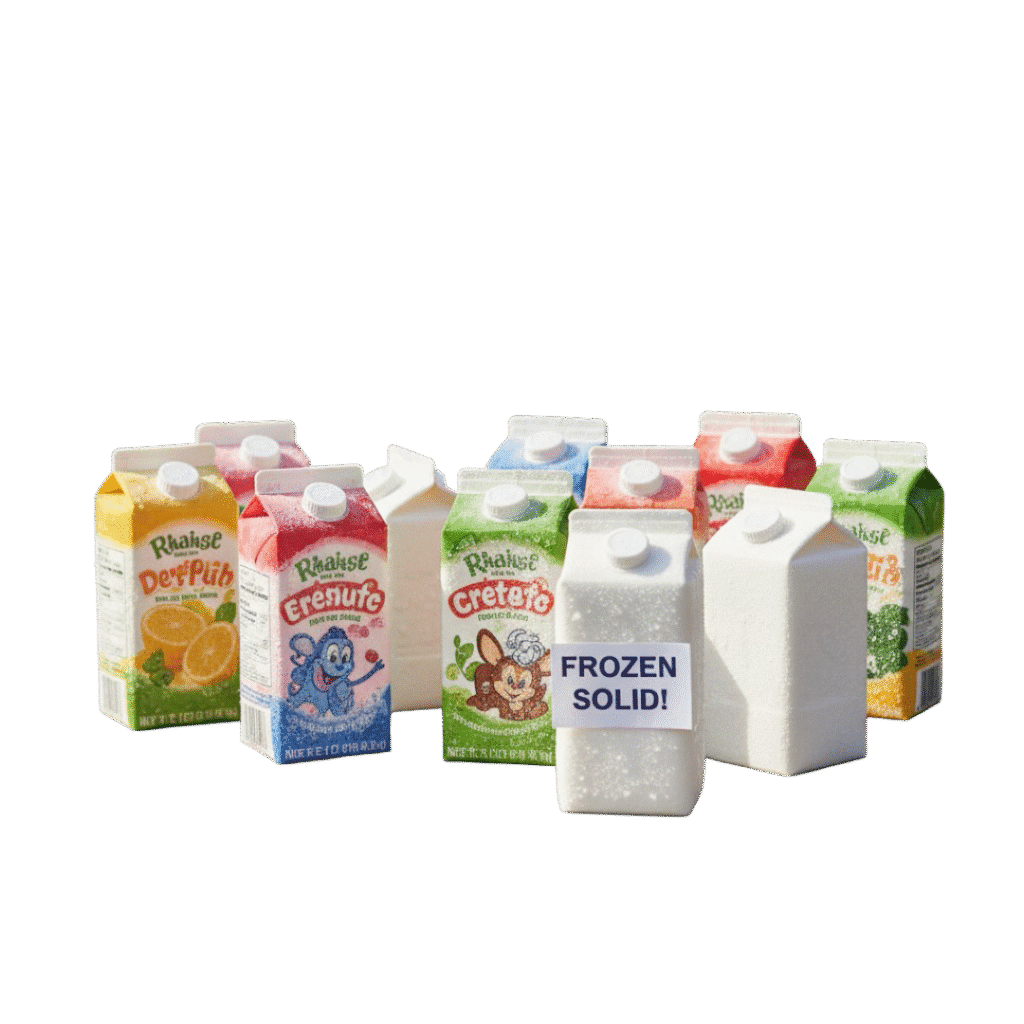
🧁 3. Frozen Sponge in a Ziplock Bag
Best For: Short trips or first aid
Soak a sponge in water, place it in a resealable plastic bag, and freeze it. The sponge retains the water as ice and absorbs it as it melts, preventing leaks — unlike traditional ice cubes.
✅ Pros:
- Leak-proof and reusable
- Easy to make at home
❌ Cons:
- Doesn’t stay cold as long as gel packs
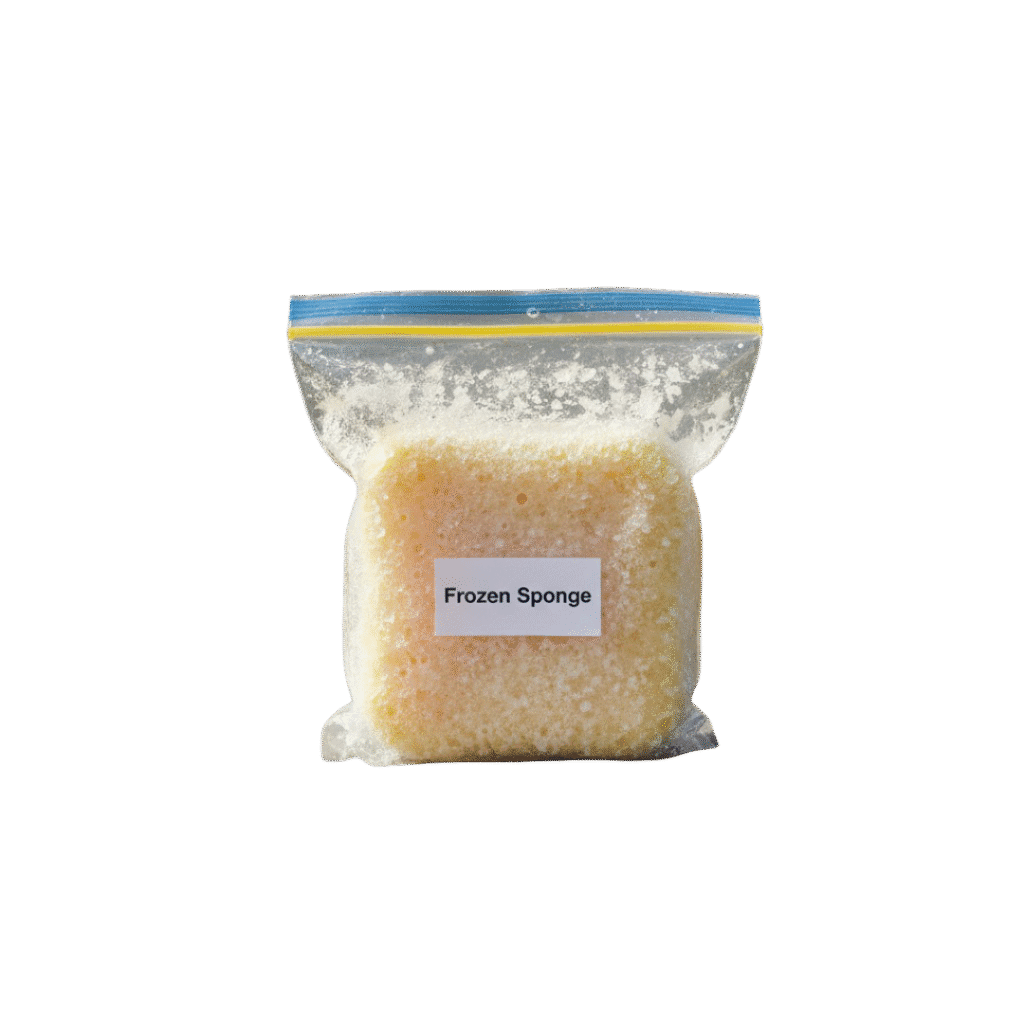
🌿 4. DIY Gel Ice Pack (Corn Syrup or Dish Soap)
Best For: Home-made ice pack replacement
Mix corn syrup or dish soap in a freezer-safe bag and freeze it. These substances don’t harden completely, giving a flexible, gel-like texture — ideal for wrapping around bottles or food containers.
✅ Pros:
- Flexible and reusable
- Easy to make
❌ Cons:
- Can leak if bag seal breaks
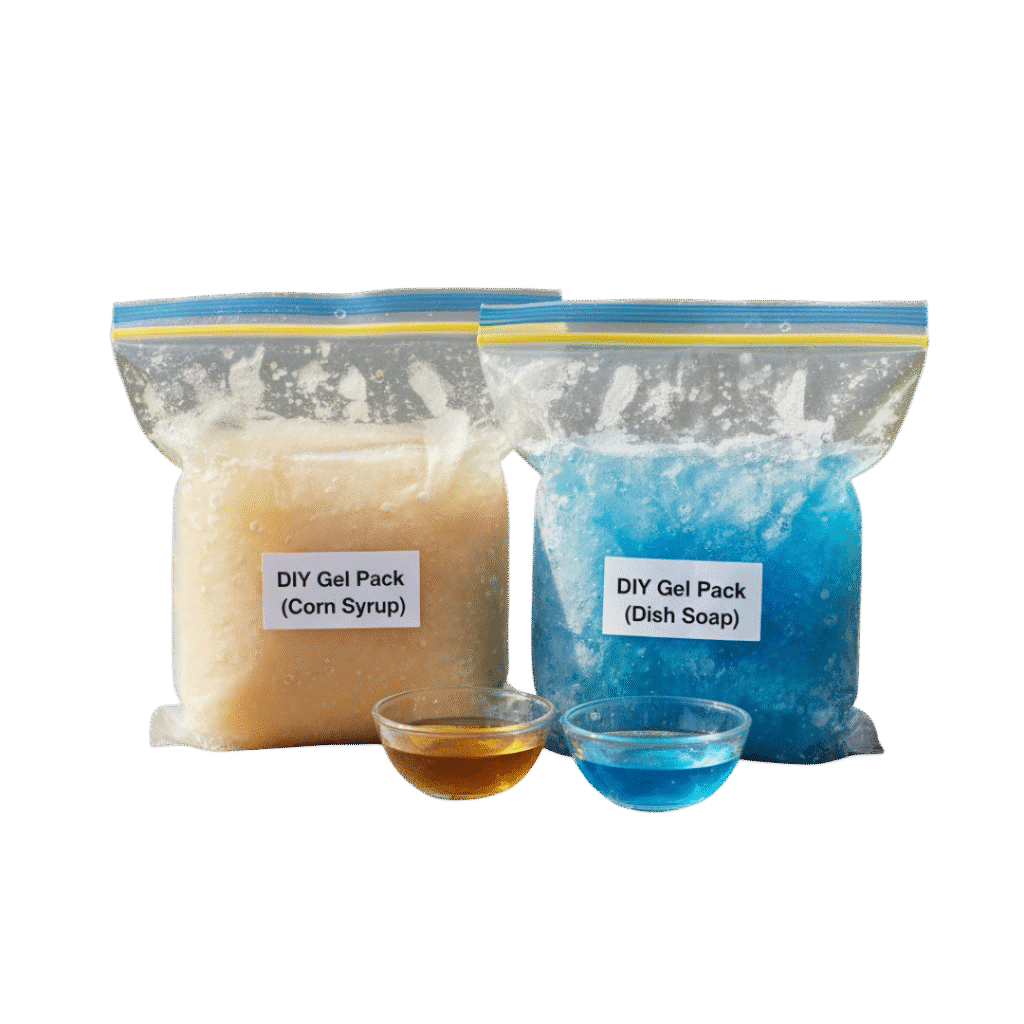
🧺 5. Frozen Grapes or Fruits
Best For: Picnics and kids’ snacks
Frozen fruits like grapes, strawberries, or orange slices work as natural chillers. They keep food cold and can be eaten once thawed, perfect for a healthy snack on the go.
✅ Pros:
- Edible and eco-friendly
- Adds a refreshing touch to your meal
❌ Cons:
- Not suitable for very long cooling periods
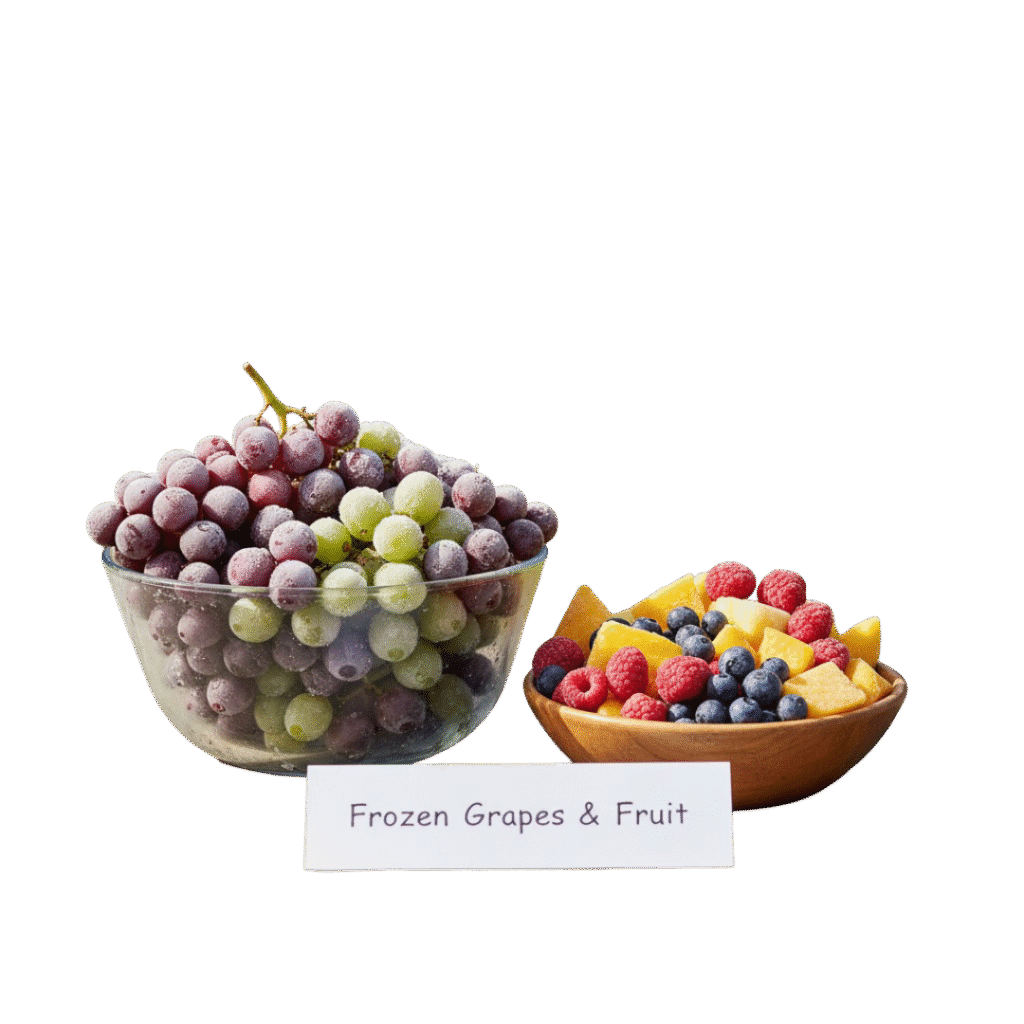
🧊 6. Frozen Rice or Bean Bags
Best For: Lunch boxes or small coolers
Fill a cloth bag or sock with uncooked rice or beans and freeze it overnight. The grains retain cold surprisingly well and can be reused multiple times.
✅ Pros:
- Reusable and eco-friendly
- Conforms to container shape
❌ Cons:
- Doesn’t stay cold as long as gel ice
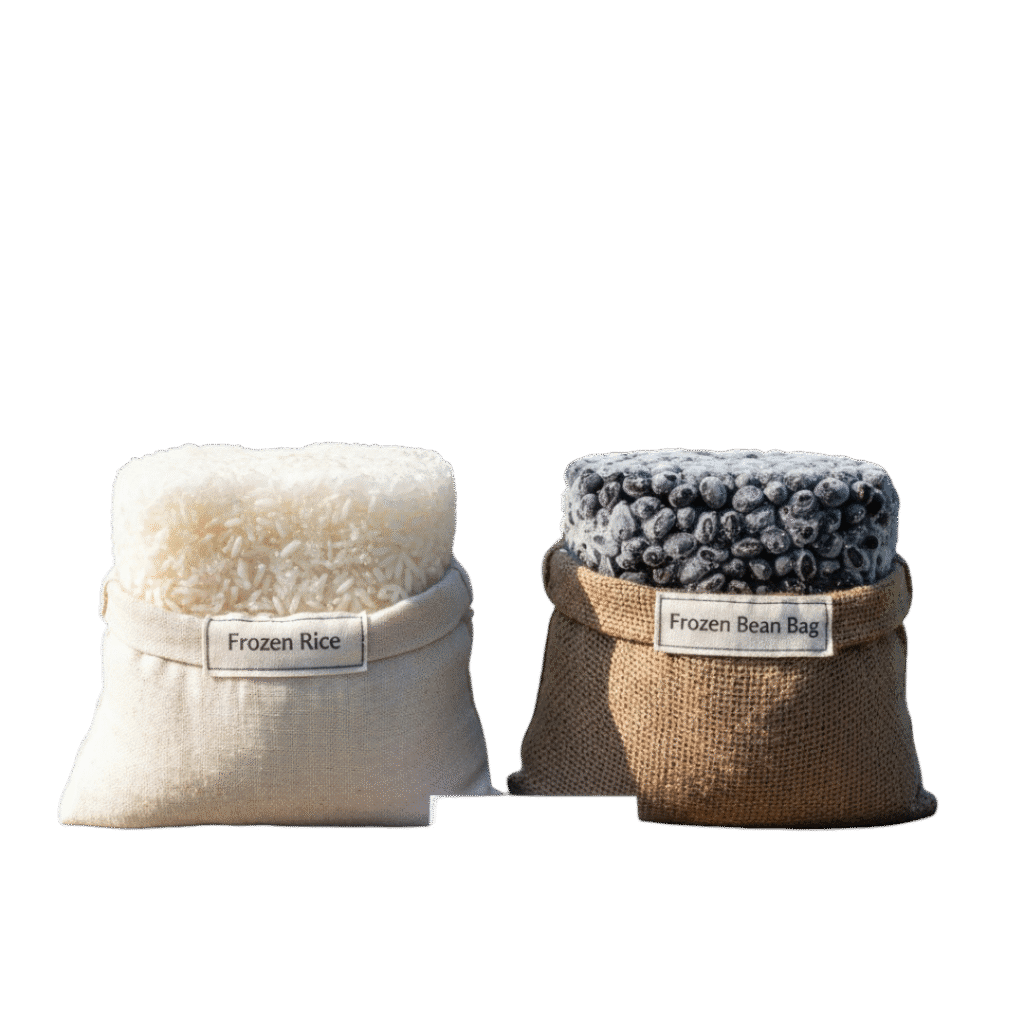
♻️ 7. Reusable Gel Packs
Best For: Everyday use and long trips
While not a full DIY solution, reusable gel packs are great eco-friendly substitutes. They stay cold for hours, don’t create condensation, and can be reused hundreds of times.
✅ Pros:
- Long-lasting and reliable
- Leak-proof and flexible
❌ Cons:
- Requires freezer storage space
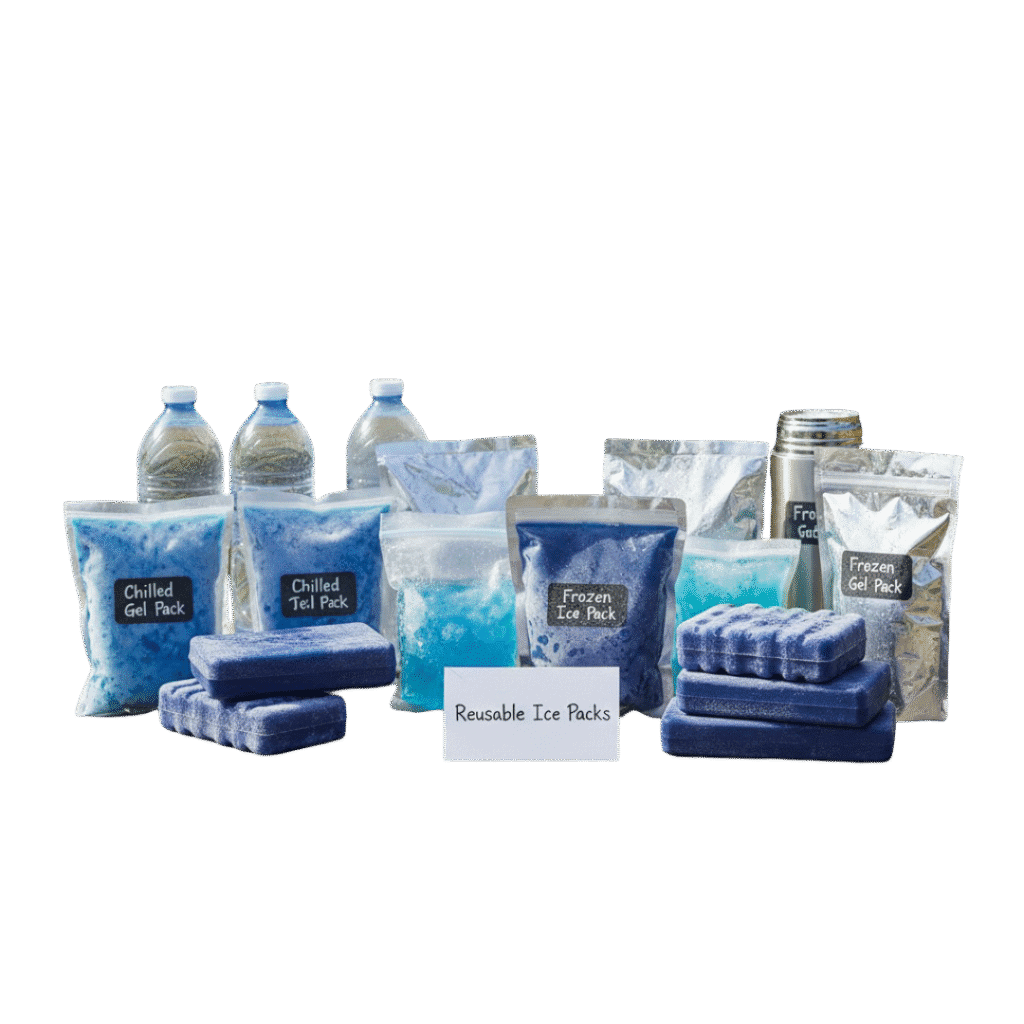
🧃 8. Frozen Tetra Packs or Yogurt Tubes
Best For: Lunches and short outings
Tetra packs of juice or yogurt tubes can be frozen and used like small cold packs. Once thawed, they serve as delicious snacks or drinks.
✅ Pros:
- Dual purpose (snack + ice pack)
- No waste
❌ Cons:
- Limited cooling duration
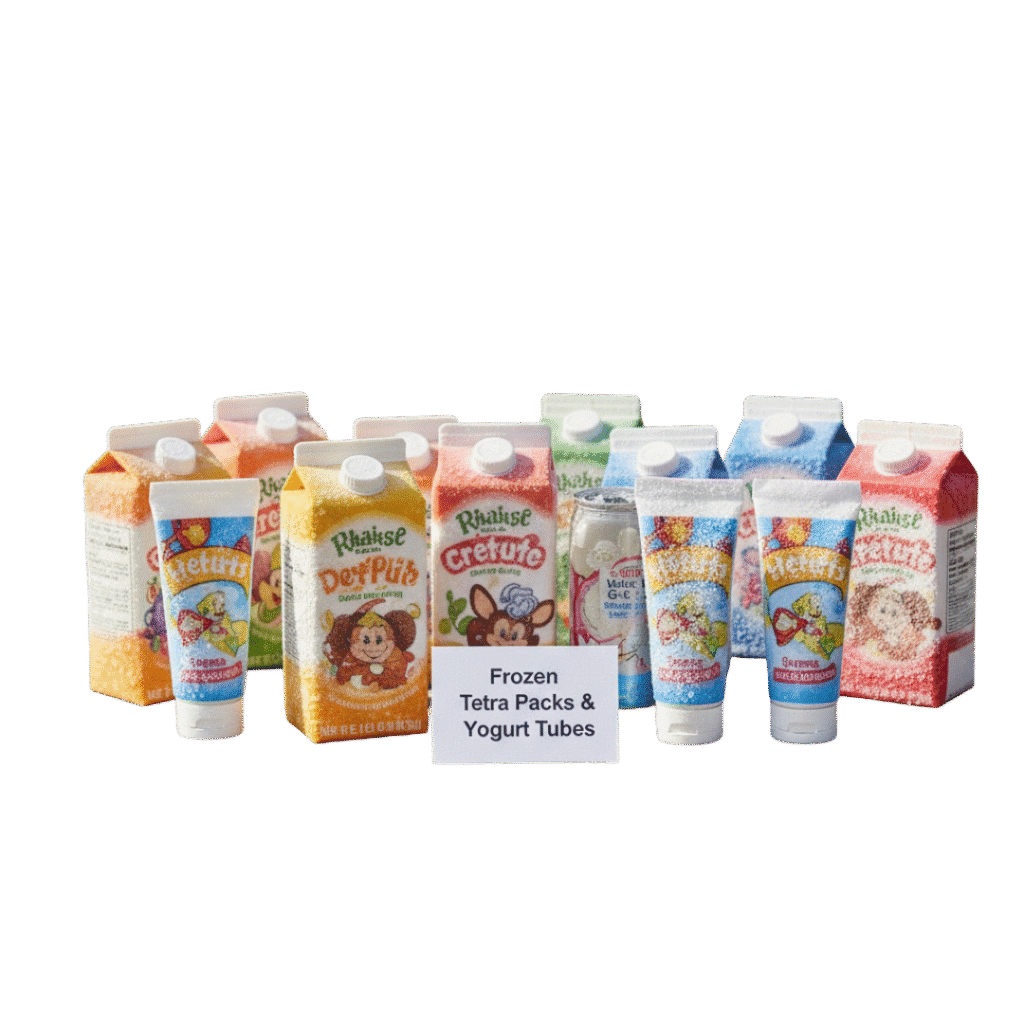
🌬️ 9. Wet Cloth or Towel (Evaporative Cooling Method)
Best For: Outdoor picnics and power outages
Wrap food or bottles in a wet towel and place them in a breezy area or shaded spot. As the water evaporates, it draws heat away, naturally cooling your items — an age-old, electricity-free trick.
✅ Pros:
- No freezer needed
- Works in dry climates
❌ Cons:
Less effective in humid conditions

🧊 10. Frozen Meals or Pre-Chilled Items
Best For: Long trips and cooler efficiency
Place frozen meals or pre-chilled drinks inside your cooler. They’ll help maintain a low temperature while gradually thawing for later use.
✅ Pros:
- Saves space
- Keeps food cold longer
❌ Cons:
- Limited to food that can be frozen
